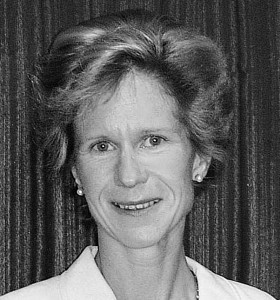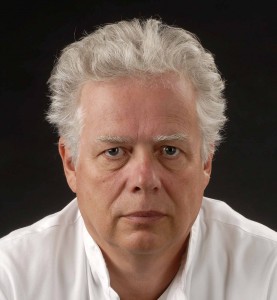Experts sound the alarm on dangers facing radiologists
Watch this session on ECR Live: Wednesday, March 4, 16:00–17:30, Room E2
Tweet #ECR2015E2 #PC4A
Remember HAL 9000, the murderous computer in ‘2001: A Space Odyssey’? This scenario doesn’t seem too far off when it comes to radiologists and the constant evolution of their technology. Luckily, they can still stay in control if they change their behaviour and remain at the head of the imaging process, experts will argue during a Professional Challenges session today at the ECR.
Radiologists must claim their place in the medical team if they are to survive. They must come out of the shadows and show that they can bring added value to the team, according to Jim Reekers, professor of interventional radiology at the University of Amsterdam, who will chair the session.
“I want to make my colleagues aware that they should step out of their offices and act as doctors who work in multidisciplinary teams. Being the photographers or doctors who only give a report with a picture will not secure their future and the reason is very simple: anybody can make and look at a picture nowadays. The difference the radiologist brings is that he or she can give an interpretation of the picture within the context of a patient’s clinical situation. So the radiologist should become a doctor who gets involved with the patient’s situation,” he said.
There is more than one way to do this. For starters, to be on the same level as clinicians, radiologists must behave as such. That means they have to do more than just show the images in multidisciplinary team meetings, they have to sit and discuss them with the doctors.
“Have a junior show the images for you. While my junior presents the pictures, I am sitting together with the other specialists, and suggesting treatment and follow-up options or further diagnostic investigation. It is important to sit with the other doctors. There’s a big difference in how people see me. I’m one of them instead of being the guy who shows the pictures,” Reekers said.
Then, and most importantly, radiologists must subspecialise in one area. Knowing everything about a subspecialty will ensure that the service provided goes beyond the simple interpretation of images, Nicola Strickland, a consultant radiologist at the Imperial College Healthcare NHS Trust, Hammersmith Hospital in London, explained.

Nicola Strickland, from Hammersmith Hospital in London,
will speak about the radiologist’s
future in today’s professional
challenges session.
“No radiologist is future proof. But we can protect ourselves by remaining at the forefront of radiological knowledge, which inevitably means that radiologists everywhere will have to subspecialise to some extent. They can remain general radiologists but with a particular interest in special areas of medicine or surgery. We have to remember that we are all doctors first and radiologists second. We are interpreting the imaging studies in the light of our medical knowledge of the patient’s condition. So it is important to remember that when our colleagues ask for a consultation on a patient and that patient’s imaging, they want the opinion of a doctor who understands the possible pathological conditions and their implications, and can interpret the images in the light of a broad knowledge of medicine and surgery,” she said.
It may sometimes be useful to meet the patient and explain the procedure that will be carried out or the results of an investigation, the way interventional radiologists or radiologists performing mammography do. Radiologists can also, if they have a good relationship with clinicians, accompany them when they do rounds to visit patients, Reekers
suggested. The point is to improve their visibility to both the clinicians and the public.
Another area where radiologists can ‘future proof’ themselves and make themselves indispensable is imaging IT. IT has advanced enormously over the past ten years, and it has done so in medical imaging more than any other area of clinical practice, Strickland pointed out.
“With our knowledge of radiological information systems (RIS), picture archiving and communication systems (PACS), speech recognition, electronic patient records, and all the high technology machinery that we use, MR, CT, PET/CT scans and complex post-processing image reconstruction, we are already experts in the area of imaging IT. We need to apply that knowledge to the whole of medicine and surgery, and involve ourselves in advising the whole IT department in hospitals and healthcare institutions on the best type of imaging IT for that institution. We have to pay particular attention to the integration of these systems and draw attention to the fact that we must have the record of the whole patient pathway accessible to us as radiologists,” she said.
This last point is an area radiologists will have to fight for in the absence of a system enabling doctors to access all the patient’s imaging history, Strickland insisted.
“We need immediate access to the past imaging and to the imaging study reports with integration across the whole healthcare network and this is one of the big deficits that has developed in modern healthcare. Lack of immediate interconnectivity between healthcare institutions where the patient has had his/her imaging studies performed means
that the reporting radiologist and the doctor looking after the patient do not have timely access to all the relevant previous imaging studies, and may not even be aware that such studies exist, which is detrimental to the patient’s subsequent management and current care. We need to provide optimum patient care and we can only do that when we have proper complete access to the imaging history of that patient,” she said.
Another flaw in modern healthcare, Reekers argues, is teleradiology. Simply put, teleradiology is a death sentence for the radiologist’s profession.
“Radiology departments do not sell images but diagnostic information and advice. Teleradiology is a commodity that is driven by cost savings and shortages of radiologists, but it has no added value in the hospital. Teleradiology is a disaster: it will be the downfall of radiology and it is going to kill radiology. As teleradiologists we are not seen, not involved, and we don’t act as doctors anymore. At the end of the line you can put anybody there, you can put a radiographer there and nobody will know. If this continues, radiology will not exist in 15 years, because everything will be gone. The moment the doctor is not in the hospital anymore, the clinicians will start reading films themselves. They’ll say they don’t need teleradiology anymore. But if you have a very good radiologist who’s very much like a partner, you don’t need teleradiology,” he said.
Instead of using teleradiology, physicians should develop a network of specialists outside their hospital
and cooperate with these experts when necessary, by making the most of telecommunication technology currently available and having multidisciplinary meetings. Reekers published a paper in Insights into Imaging earlier this year, in which he explained in detail this model and how to place the radiologist back in the driving seat (1).
“I think certainly that a patient is often not well served by teleradiology services,” Strickland echoed. “What I would prefer to see is what I have called in the UK ‘NHS in-sourcing’, in which you use expertise from a region defined by existing patient referral pathways, where you would network hospitals together, because within a region the radiologists know each other, the non-radiological doctors know each other, and most importantly they take part in multidisciplinary meetings together to discuss the patients. If we have to use teleradiology it has to be integrated into clinical care. I think it will always remain a second best option, and the appropriateness of its use in particular well-defined circumstances (e.g. acute uncomplicated emergency out of hours head scans, acute trauma, cold musculoskeletal imaging where there are no previous imaging studies, etc.) should be carefully decided
upon,” she suggested.
Whatever path they choose, radiologists are now faced with a choice: do they want to be merely imagers or imaging doctors? Experts in the session hope to help them make the right decision.
Professional Challenges Session
Wednesday, March 4, 16:00–17:30, Room E2
#ECR2015E2 #PC4a
PC 4a Radiologist: imager or doctor?
» Chairman’s introduction
J.A. Reekers; Amsterdam/NL
» Which type of radiologist is future proof?
N.H. Strickland; London/UK
» Is subspecialisation the answer?
J.A. Reekers; Amsterdam/NL
» Is teleradiology a threat to radiology?
A. Palko; Szeged/HU
» Radiology training for the future
B. Ertl-Wagner; Munich/DE
» Panel discussion: How do radiologists stay relevant
and what is the role of the ESR?



